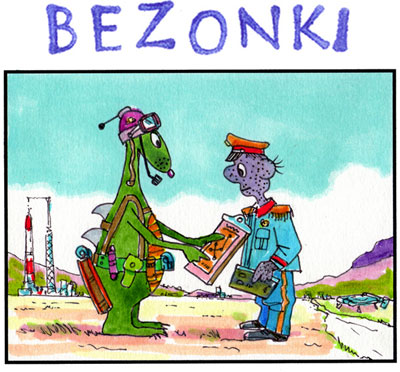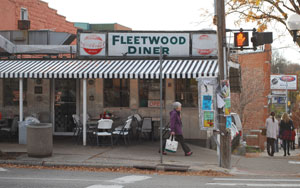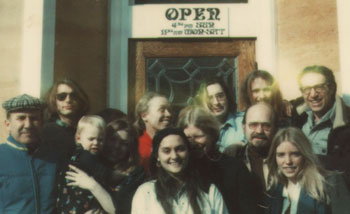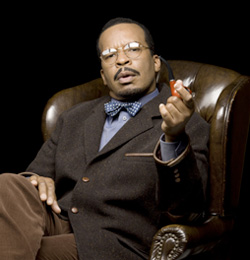At Thanksgiving, a flesh eater’s fancy turns heavily to thoughts of a dead bird. What better time of year, then, for cartoonist Jay Fosgitt to serve up a pair of them?
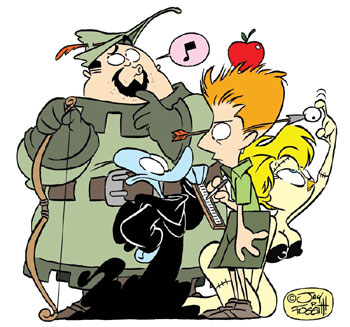
Panel from Jay Fosgitt's "Dead Duck." (Image links to higher resolution file)
Meet Dead Duck, the title character of Fosgitt’s debut graphic novel, and his sidekick, Zombie Chick. They work for the Grim Reaper (aka J. P. Yorick); their task is to haul the reluctant chosen over to the other side (aka Rigormortitropolis) by any means necessary.
Happily for us all, bringing in the dead has always been a rich lode for historical references, literary allusions and rude humor.
“Dead Duck” takes off on all three, with riffs on the Salem witch trials, Beatlemania, the Canadian health care system, the Crusades, Punch and Judy, the “Vagina Monologues,” Chaucer, SCTV’s Doug and Bob McKenzie (Fosgitt has great affection for the Great White North), Nazi porn and blaxpliotation flicks, just to skim the colorful surface.
“Dead Duck,” Fosgitt freely advises, is “not profane, but it’s certainly not for little kids.”
The book, published by Ape Entertainment, is due out next month – though Fosgitt is expecting a FedEx delivery of 200 copies to his home today, according to his blog. The weekly comic also has been appearing since February at Apecmx.com. That’s where you’ll find Fosgitt’s commentary on his inspirations for that week’s strip and the technical aspects of cartooning, as well as other observations. And you’ll find Fosgitt at Ann Arbor’s Vault of Midnight on Main Street from 5-8 p.m. on Wednesday, Dec. 2, where he’ll talk about “Dead Duck” and sign copies of his book. [Full Story]







